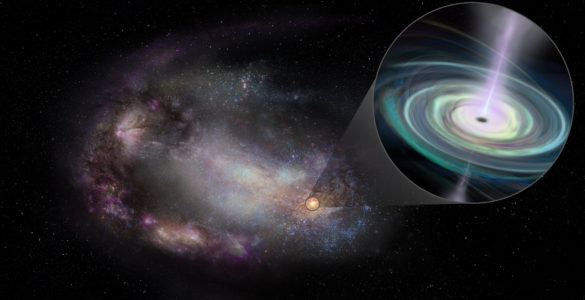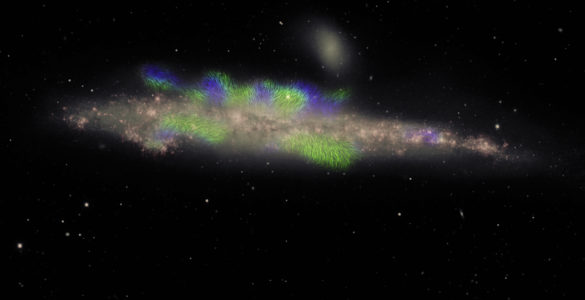Latest NRAO News
News is managed by NRAO News & Public Information. Questions about News? Have a story to share? Want to interview a scientist or create new media about our telescopes?

Something done routinely for decades — move VLA antennas into a new configuration — suddenly became challenging because of COVID-19. With careful planning and a lot of teamwork, the NRAO staff got the job done to keep the scientific research going.

An international team of astronomers has created the most detailed map yet of the atmosphere of the red supergiant star Antares.

Some young, still-forming stars are surrounded by regions of complex organic molecules called “hot corinos.” In some pairs of young stars forming together as binary pairs, astronomers found a hot corino around one, but not the other. Guessing that the unseen one might be obscured by dust, researchers studied such a pair with the VLA at radio wavelengths that readily pass through dust, and found the other one.

Analysis of two cosmic explosions indicates to astronomers that the pair, along with a puzzling blast from 2018, constitute a new type of event, with similarities to some supernovae and gamma-ray bursts, but also with significant differences.

Using VLA and Spitzer observations, astronomers are able to determine wind speeds on a brown dwarf for the first time. They believe the technique also could be used for exoplanets.

An international team of astronomers used ALMA and the VLA to create more than three hundred images of planet-forming disks around very young stars in the Orion Clouds. These images reveal new details about the birthplaces of planets and the earliest stages of star formation.

New technologies that enable new strategies are revitalizing the Search for Extraterrestrial Intelligence (SETI), by not only augmenting the traditional search for intelligently-generated radio signals but also allowing searches for other signs of life and technological activity.

NRAO and the SETI Institute will develop a new system to provide VLA data to an advanced signal processor that will seek to detect signs of extraterrestrial technologies.

Studies with the VLA indicate that roughly half of the massive black holes in dwarf galaxies are not in the centers of those galaxies. This gives astronomers new insights into the conditions in which similar black holes formed and grew in the early history of the Universe.

VLA image reveals a large-scale magnetic field extending far into a galaxy’s extended halo.





